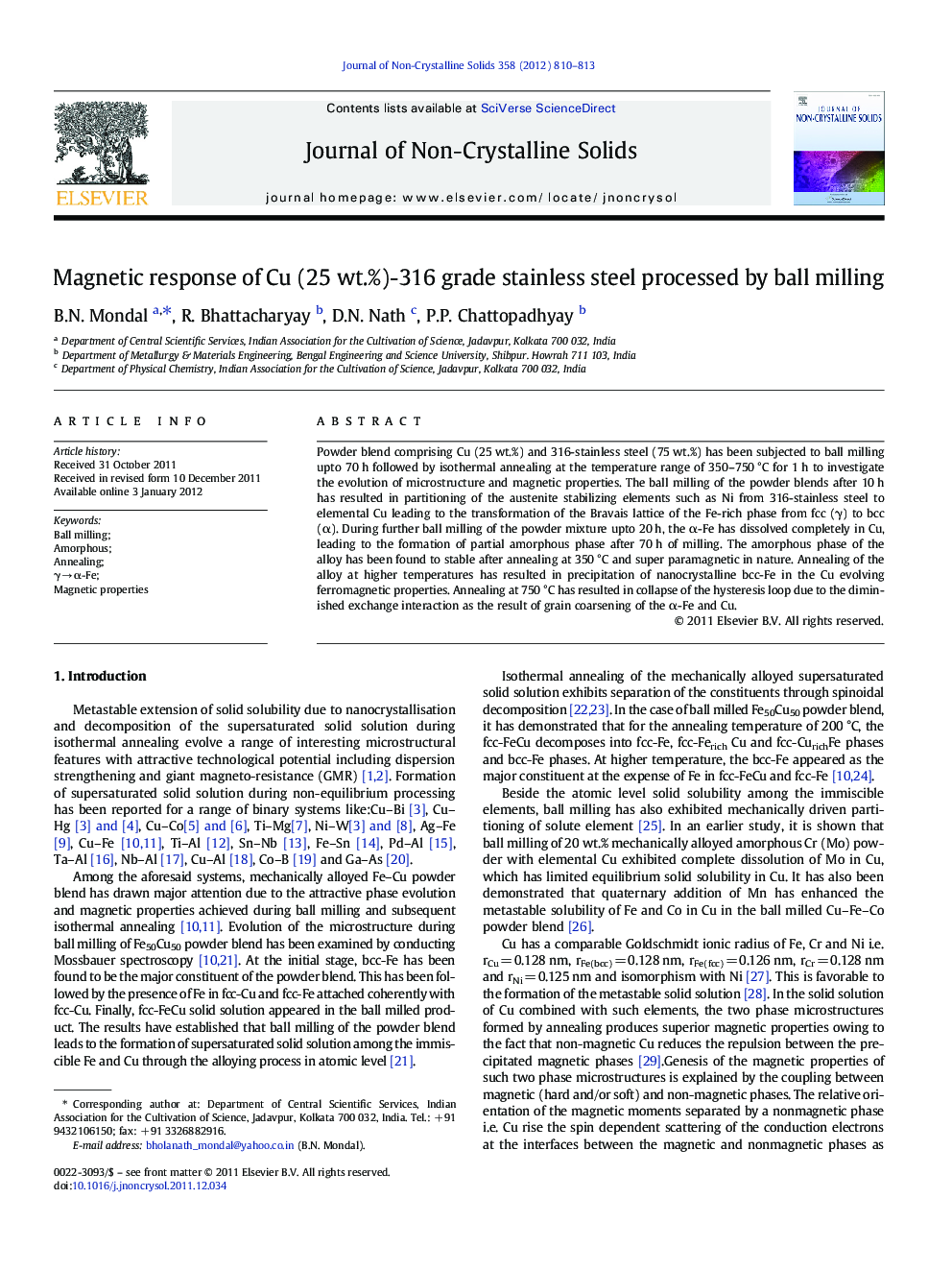| Article ID | Journal | Published Year | Pages | File Type |
|---|---|---|---|---|
| 1482376 | Journal of Non-Crystalline Solids | 2012 | 4 Pages |
Powder blend comprising Cu (25 wt.%) and 316-stainless steel (75 wt.%) has been subjected to ball milling upto 70 h followed by isothermal annealing at the temperature range of 350–750 °C for 1 h to investigate the evolution of microstructure and magnetic properties. The ball milling of the powder blends after 10 h has resulted in partitioning of the austenite stabilizing elements such as Ni from 316-stainless steel to elemental Cu leading to the transformation of the Bravais lattice of the Fe-rich phase from fcc (γ) to bcc (α). During further ball milling of the powder mixture upto 20 h, the α-Fe has dissolved completely in Cu, leading to the formation of partial amorphous phase after 70 h of milling. The amorphous phase of the alloy has been found to stable after annealing at 350 °C and super paramagnetic in nature. Annealing of the alloy at higher temperatures has resulted in precipitation of nanocrystalline bcc-Fe in the Cu evolving ferromagnetic properties. Annealing at 750 °C has resulted in collapse of the hysteresis loop due to the diminished exchange interaction as the result of grain coarsening of the α-Fe and Cu.
► Partial amorphization obtained after 70 h of milling is observed by XRD and HRTEM. ► The EDX analysis result confirms the presence of Fe, Cr, Ni and Mn and Cu. ► Precipitation and grain coarsening of Fe and Cu after annealing are observed by XRD. ► Magnetic measurements reveal that the amorphous phase is super paramagnetic. ► Annealing at 550 and 750 °C has evolved ferro and para-magnetic, respectively.
